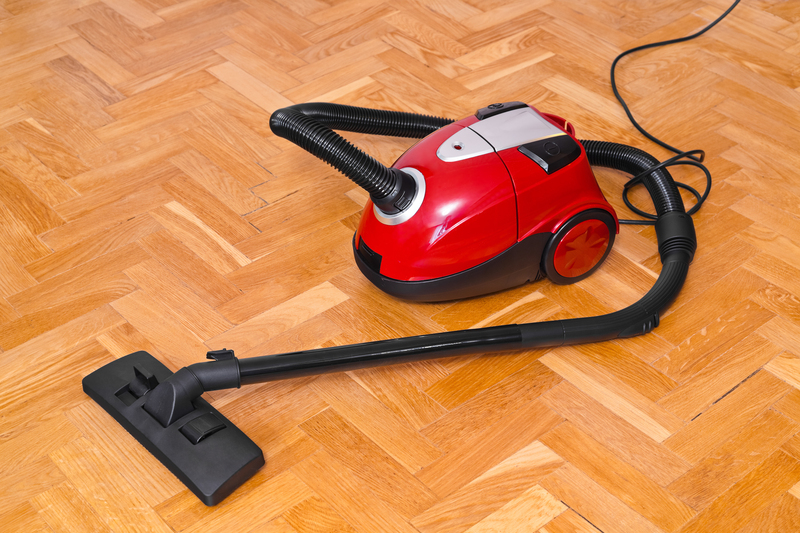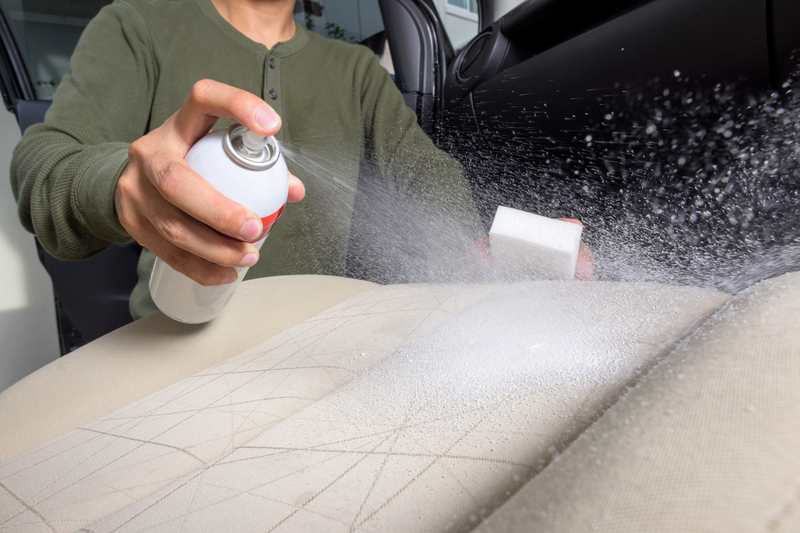Expert Advice on Eliminating the Unpleasant Damp Smell
Posted on 22/08/2025
Expert Advice on Eliminating the Unpleasant Damp Smell
The faint musty odor that lingers in basements, bathrooms, or rarely-used rooms can be a persistent annoyance. Not only is the unpleasant damp smell disruptive to comfort, but it also hints at hidden moisture problems, potential mold growth, and structural concerns. In this comprehensive guide, we'll share expert advice, practical tips, and actionable steps to help you eliminate damp smells from your home or work environment--for good.

Understanding the Causes of Damp Odors
Before addressing how to remove musty smells, it is essential to understand their causes. A damp smell is your nose's way of detecting excess humidity or hidden moisture. Some common sources include:
- Water leaks: Leaky roofs, pipes, or window seals can slowly seep water into walls, ceilings, or floors.
- Poor ventilation: Inadequate airflow, especially in basements and bathrooms, leads to trapped humid air.
- Condensation: Cooler surfaces allow condensation to form, creating a breeding ground for mold and mildew.
- Flooding events: Even after visible water is cleared, lingering moisture can generate a persistent musty odor.
- Rising damp: Older buildings may have moisture rising from the ground through floors and walls.
Expert tip: Wherever there is a damp smell, there is moisture present. Identifying the source of the moisture is the crucial first step in eliminating the odor permanently.
Step 1: Identify the Source of Dampness
Visual Inspection
Conduct a thorough visual inspection of the affected area. Look for:
- Water stains or discoloration on walls, floors, and ceilings
- Peeling wallpaper or paint
- Mold or mildew growth--often appearing as black, green, or white fuzzy spots
- Warped wooden surfaces
Pay special attention to corners, behind furniture, and inside cupboards where airflow is limited.
Check for Leaks
Inspect pipes, faucets, and appliances (washing machines, dishwashers, water heaters) for any signs of leaks. Even a small drip can promote dampness over time.
Assess Humidity
Use a hygrometer (humidity meter) to check the relative humidity in your space. Ideally, indoor humidity should be between 30% and 50%. Higher readings indicate excessive moisture and a risk for that characteristic damp odor.
Step 2: Remove the Source of Moisture
Fix Leaks and Water Ingress
Address all leaks immediately. Tighten plumbing connections, replace broken seals, and patch roof or window leaks. If rising damp is the culprit, consult a professional about installing a damp-proof course or membrane.
Improve Drainage and Ventilation
- Install or service extract fans: Bathrooms and kitchens benefit greatly from extractor fans to reduce humidity.
- Open windows: Even a few minutes a day can help to ventilate stale air and reduce moisture build-up.
- Clear blocked gutters and downspouts: Direct rainwater away from your property's foundations.
Use a Dehumidifier
A quality dehumidifier can efficiently reduce airborne moisture, speeding up the drying process and mitigating musty smells quickly. Regularly empty and clean the water reservoir to prevent secondary odors.
Step 3: Eliminate the Unpleasant Damp Smell
Deep-Clean Affected Areas
When the source of moisture is controlled, focus on eradicating the smell:
- Wash soft furnishings: Curtains, rugs, upholstery, and bedding can absorb musty odors. Launder them on the hottest setting safe for the fabric, using a cup of white vinegar to neutralize persistent smells.
- Clean hard surfaces: Use a solution of water, vinegar, and mild soap to wipe down floors, walls, and furniture.
- Remove and replace moldy materials: Severely water-damaged carpets, drywall, or ceiling tiles may require professional remediation.
Neutralize Odors Naturally
- Baking soda: Sprinkle generously on carpets and mattresses. Leave overnight and vacuum thoroughly.
- Charcoal: Activated charcoal bags are excellent at absorbing lingering odors and moisture.
- Bowl of white vinegar: Place open bowls in problem areas to absorb stale odors over 24-48 hours.
- Essential oils: A few drops in a diffuser (eucalyptus, tea tree, or lavender) help freshen the air naturally.
According to cleaning experts, combining several of these methods yields the quickest results for eliminating damp smells.
Step 4: Prevent Dampness and Musty Odors from Returning
Keep Areas Dry and Well-Ventilated
- Regularly air out rooms, especially after showers or cooking.
- Wipe down wet walls or surfaces immediately.
- Use moisture absorbers (silica gel packs, calcium chloride) in closets and under sinks.
Monitor Humidity
- Keep a hygrometer in rooms prone to dampness.
- Run your dehumidifier as needed, particularly during the rainy season or in humid climates.
Routine Maintenance
- Inspect and maintain roof, guttering, and external walls regularly.
- Service appliances that use water at least once a year.
- Re-seal windows and exterior doors where necessary to prevent water ingress.
Expert FAQs: Dealing with Persistent Damp Smell
Why does my damp smell keep returning?
_Recurrent damp odors_ suggest that the source of moisture has not been fully controlled. Check for hidden water leaks or areas of your home where ventilation remains poor. Sometimes, professional assessment is necessary to identify less obvious issues such as insulation gaps or foundation cracks.
Are damp smells dangerous?
The smell itself is not harmful, but its cause--excess moisture and mold growth--can affect respiratory health, trigger allergies, or damage property.
Can air fresheners help eliminate a musty smell?
_While air fresheners may mask_ the odor temporarily, they do not eliminate the root cause. It's crucial to address the underlying moisture and use odor-absorbing techniques rather than covering up the smell.
Should I call a professional?
If the unpleasant damp smell persists despite your efforts, or if you spot extensive mold, structural damage, or cannot locate the moisture source, consulting a professional is the safest solution. Mold remediation experts use specialized equipment to detect and eliminate hidden problems.
Natural and DIY Solutions for Damp Odor Removal
Vinegar Wash
Mix equal parts white vinegar and warm water in a spray bottle. Apply to affected areas--such as walls, floors, or tiles--and scrub gently. Vinegar naturally kills mold spores and neutralizes many odors.
Baking Soda Carpet Treatment
Baking soda's alkaline properties make it a powerful odor absorber. Dust onto carpets, leave for several hours, and vacuum thoroughly to refresh your space.
Sunlight Exposure
Whenever possible, place damp-smelling items or furniture outdoors in direct sunlight for a few hours. The UV rays help kill mold and bacteria while fresh air sweeps the smell away.
Long-Term Solutions for Damp Prevention
Upgrade Insulation and Waterproofing
Proper insulation prevents condensation on cold surfaces (such as windows, walls, and floors) and keeps humidity levels in check. Basements and crawl spaces particularly benefit from:
- Waterproof membranes
- French drains
- Wall and subfloor vapor barriers
Use Smart Home Technology
Consider installing smart humidity sensors and Wi-Fi-connected dehumidifiers to automate and monitor problem areas. Some models alert you via smartphone if moisture rises to concerning levels.
Redesign Problem Spaces
Avoid placing bulky furniture flat against exterior walls where air cannot circulate. Opt for open shelving or modular units that promote airflow. Replace heavy draperies with lighter, washable alternatives.

Creating a Fresh-Smelling Home: Lifestyle Habits
- Launder towels and linens regularly--never let them sit damp in hampers.
- Keep bathrooms and kitchens dry by wiping down tiles and counters after use.
- Store shoes and outerwear in ventilated areas; use baking soda sachets or cedar blocks to prevent odor build-up.
Conclusion: Achieve Lasting Results
A persistent damp odor is more than an inconvenience--it's a call to action to protect your indoor air quality, comfort, and investment in your home. With the right mix of moisture control, thorough cleaning, ongoing maintenance, and natural odor neutralizers, you'll not only eliminate unpleasant damp smells but also prevent them from returning.
For the toughest cases, remember: there's no substitute for professional intervention where health or property may be at risk. Otherwise, with these trusted, expert-backed methods, your home can stay fresh, dry, and inviting all year long.
Key Takeaways for Eliminating Damp Smells
- Identify and eliminate the source of moisture.
- Use a combination of cleaning, ventilation, and odor-absorbing techniques.
- Maintain vigilance with humidity levels and regular inspections.
- Adopt lifestyle habits that support a dry, fresh-smelling indoor environment.
Use these expert recommendations to say goodbye to the unpleasant damp smell--and enjoy a naturally clean, odor-free space for years to come.









